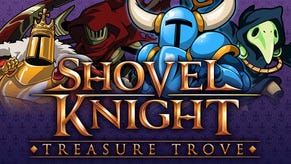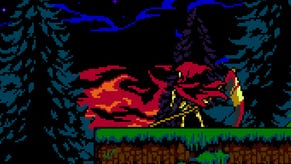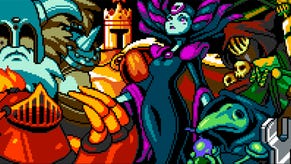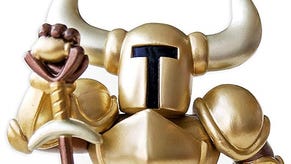Shovel Knight: Specter of Torment Review
The third campaign for Shovel Knight continues the the series' standard of platforming excellence.
This article first appeared on USgamer, a partner publication of VG247. Some content, such as this article, has been migrated to VG247 for posterity after USgamer's closure - but it has not been edited or further vetted by the VG247 team.
Here we stand with the third entry in Yacht Club Games' Shovel Knight, showing off everything the studio has learned since the first game's release in 2014. The initial Shovel Knight campaign, since renamed Shovel of Hope, was a polished homage to classic NES platformers like Mega Man and Ducktales. Plague of Shadows remixed the original title with new stages aimed towards veteran players with unique attack and movement mechanics.
While Plague of Shadows was an alternate reality take on the first campaign, Specter of Torment acts as a prequel to Shovel of Hope. You step into the shoes of Specter Knight, the undead warrior working directly for the Enchantress. It's up to Specter Knight to find the toughest warriors in the land, subdue them with his scythe, and forge the Order of No Quarter.
While Shovel Knight in concept played like a mix between Ducktales' Scrooge McDuck and Simon Belmont, Specter Knight stands as something a bit more unique. Specter Knight has a Dash Slash, which moves in a diagonal upwards or downwards motion. This means Spectre requires a target for his general movement, either from inanimate lanterns or enemies directly.

Successive attacks, which were easy with Shovel Knight's Shovel Drop, require a bit more movement to pull off. There's a rotation to it and you have to ensure that your positioning will result in a correct upward or downward slash. In addition, Spectre Knight can wall jump, walk directly up walls, and mantle onto platforms. As such, Spectre Knight feels like a more mobile character than Shovel or Plague Knight, closer to Strider Hiryu if I had to make a comparison.
Specter Knight lacks the extensive map of Shovel Knight's campaign, instead relying on a central hub and a magic mirror to choose between stages, bringing the series closer to Mega Man. To make up for this, Specter of Torment features completely new levels; yes, they use similar assets, but the composition is built specifically for Specter Knight's unique abilities. There's a lot of difficult platforming in Specter of Torment, with more chains of lanterns or enemies, more bottomless pits, and more split-screen reflexes required. Yacht Club Games plays with some other ideas in Specter of Torment, like Specter Knight's ability to rail-grind on his scythe.

All told, when compared to Shovel Knight, Specter of Torment feels a bit on the short side. Despite that, it's still a great 2D platformer and one that every current Switch owner should be picking up. Shovel Knight: Specter of Torment is a tightly-tuned precise platformer, just like its predecessors. On its own, it's well worth the asking price and in the Treasure Trove bundle, you're getting three of finest 2D platformers in recent memory.
Honestly, while the platforming stages have become harder, I feel like the remixed boss encounters almost feel easier this time around. There are some standouts, like Propeller Knight's fight on scrolling platforms, but otherwise I didn't have much issue with most of the fights.
Specter Knight also trades in Shovel Knight's Relics for Curios, which operate in the same manner. Using a bit of Darkness, Specter Knight can access unique abilities, though players can get through the game without using any of them. Curios like Judgment Rush, which allows Specter to teleport towards enemies and through walls, Barrier Lantern, which absorbs enemy shots to charge an attack. Darkness charges by killing enemies and when combined with the Dash Slash, it makes Specter Knight a far more aggressive character than either of his counterparts.
ConclusionSpecter of Torment stands up well next to the previous Shovel Knight and Plague of Shadows campaigns. It's a bit on the short side and the bosses are a bit easier, but Yacht Club Games has kicked out some excellent new stages this time around. This prequel still offers precise platforming and a unique, more aggressive style of play to the series.









